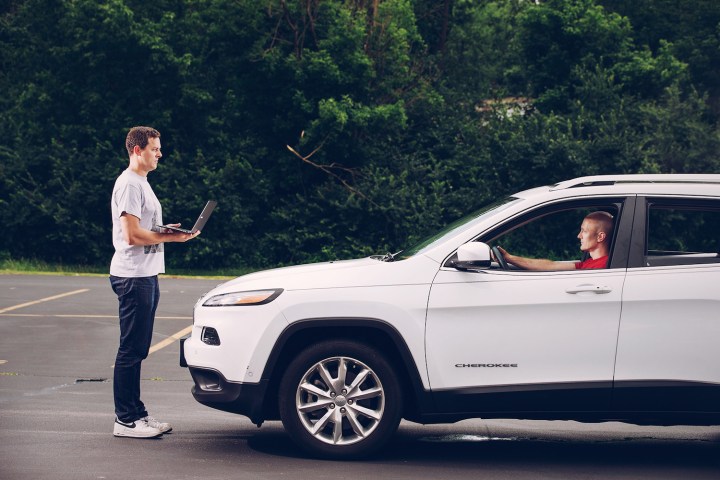
However, with the gift of connectivity comes the risk of malicious intent. Since the dawn of the World Wide Web, there have been those who seek to lie, cheat, and steal your personal information. Financial risk is one thing, but in the age of connected cars, hackers threaten more than your bank account: They threaten your physical well-being.
About six months ago, Chris Valasek, director of vehicle security research for the security consultancy IOActive; and Charlie Miller, a former NSA employee; proved that point by hijacking a Jeep Cherokee by its UConnect Infotainment System via the car’s cellular network. Doing so exposed the manipulator to the vehicle’s brakes, engine, and transmission. The worst part: This didn’t require advanced technology; they used laptops with Internet access. That’s it.

Click here to view the full infographic
It’s a terrifying proposition, but with the estimation that every new car sold in 2025 will be equipped with internet connectivity, you can either choose to invest in Fred Flintstone’s footmobile, or learn the risks from hackers who wish to access your car’s controls.
Fortunately, we’ve got a stellar infographic for you, put together by Jeremy Sutter, a technology writer from Simi Valley, California, that shows the trends of connected cars (and some potential ways to avoid them). Beyond accessing a vehicle’s IP address, hackers can use software like Webtech’s, which can shut off a car’s engine completely (while it’s moving).
Though it doesn’t directly impact your safety, hackers can also break into your car wirelessly via either a power amplifier (to boost a keyless entry signal) or through a phone network that manipulates smartphone apps to unlock doors, initial car alarms, etc.
It all sounds pretty grim, but fortunately, as new hacking methods come to light, automakers and cyber security professionals find new ways to combat them.
Editors' Recommendations
- This $3 USB adapter fixed all of my Apple CarPlay connection problems
- The car of the future? Qualcomm unveils 4th-gen Snapdragon auto platform
- Your next car might double as an internet-connected doctor
- Here’s what Bosch hopes to learn from deploying autonomous cars in San Jose
- Elon Musk says a UFO-on-a-stick will connect you to his internet satellites


